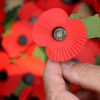AMERICA'S CUP 2013: San Francisco, California, USA.
America's Cup 2013
8 members have voted
-
1. Who will win the Louis Vuitton Challenger Series?
-
Artemus Racing, SWE
-
Emirates Team New Zealand, NZL
-
Luna Rossa Challenge 2013, ITA
-
-
2. Who will Defend?
-
Oracle Team USA, 'Team Ainslie', USA
-
Oracle Team USA, 'Team Spithall', USA
-
-
3. Who will Win America's Cup 2013?
-
Oracle Team USA, USA
-
Artemus Racing, SWE0
-
Emirates Team New Zealand, NZL
-
Luna Rossa Challenge 2013, ITA0
-


Recommended Posts
Archived
This topic is now archived and is closed to further replies.